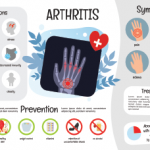The National Institutes of Health’s $945 million HEAL initiative—Helping to End Addiction Long-Term—will include money for research on pain signatures associated with the transition from acute to chronic pain, how to manage pain more effectively and optimizing non-addictive therapies to treat pain. With pain as an important outcome, “arthritis is positioned to take advantage,” he said.
“Arthritis and rheumatic conditions are major sources of chronic pain, so more general attention to pain, as has been happening over the past seven years—and pain as a major risk factor for prescribed opioids, which is a large part of the current opioid crisis—mean that arthritis and rheumatic conditions should be getting more attention from both the pain and opioid communities as part of their own agendas.”
Thomas R. Collins is a freelance writer living in South Florida.
References
- Barbour KE, Helmick CG, Boring M, et al. Vital signs: Prevalence of doctor-diagnosed arthritis and arthritis-attributable activity limitation–United States, 2013–2015. MMWR Morb Mortal Wkly Rep. 2017 Mar 10;66(9):246–253.
- Murphy LB, Cisternas MG, Pasta DJ, et al. Medical expenditures and earnings losses among US adults with arthritis in 2013. Arthritis Care Res (Hoboken). 2018 Jun;70(6):869–876.
- Guglielmo D, Murphy LB, Boring MA, et al. State-specific severe joint pain and physical inactivity among adults with arthritis—United States, 2017. MMWR Morb Mortal Wkly Rep. 2019 May 3;68(17):381–387.
- Theis KA, Steinweg A, Helmick CG, et al. Which one? What kind? How many? Types, causes, and prevalence of disability among U.S. adults. Disabil Health J. 2019 Jul;12(3):411–421.
- Furner SE, Hootman JM, Helmick CG, et al. Health-related quality of life of US adults with arthritis: Analysis of data from the behavioral risk factor surveillance system, 2003, 2005, and 2007. Arthritis Care Res (Hoboken). 2011 Jun;63(6):788–799.



